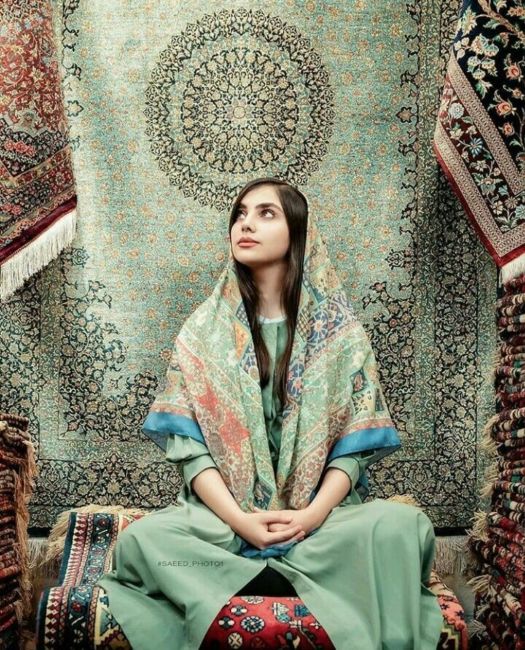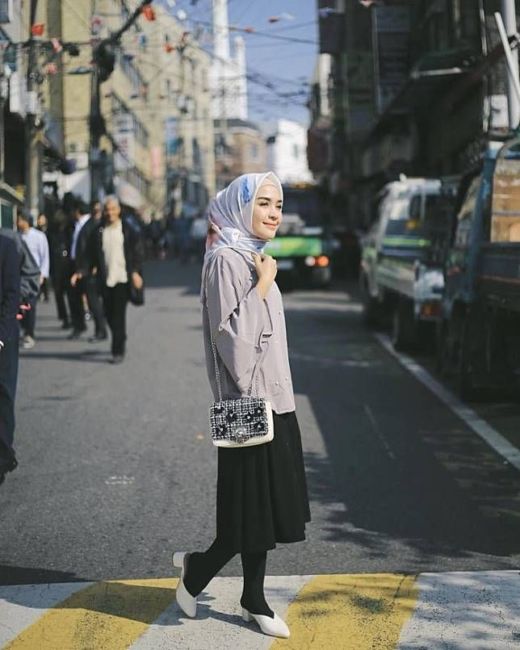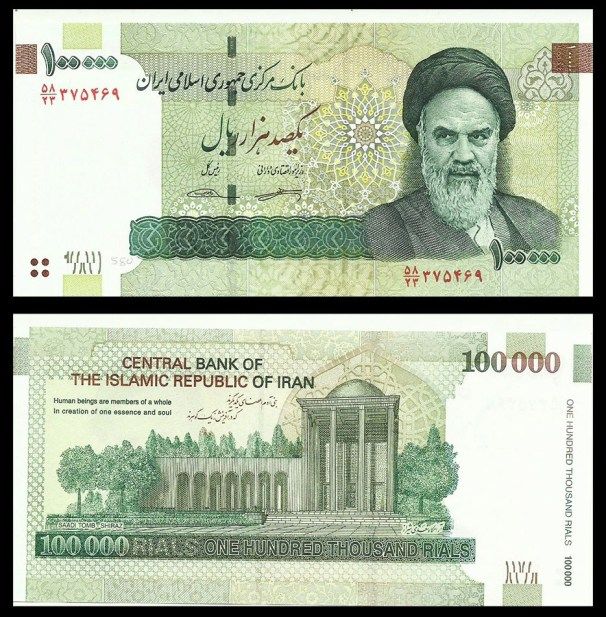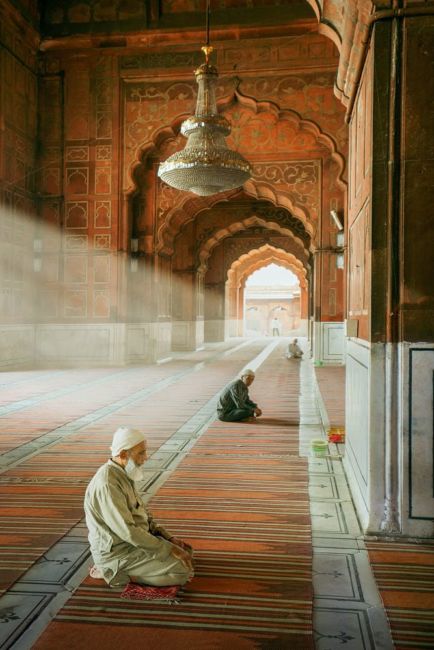Interested in Iran? Don’t rush off before reading this important information. If we ignore these things, vacation events can turn into disaster!
Iran is different from most other destinations in the world that are usually visited by tourists. There are some things that are very important for tourists to consider. This is closely related to the economic conditions that are still under embargo, as well as the political situation controlled by the theocracy. But you don’t need to worry too much, if you prepare yourself well, your trip will be safe. What should be considered? Consider the following points.
Bring Enough Cash
The economic embargo imposed on Iran prevented American companies from operating in the Persian country. So, credit cards bearing the Visa, Mastercard and American Express that we usually carry when traveling, cannot be used in Iran. Yes, all credit card brands come from America. Equivalent of three money with a debit card or ATM bearing the Visa, Mastercard, Maestro, and so on, also cannot be used in Iran.
The only way to bring money is to pocket it in cash. Difficult and risky indeed, but there is no other choice. But Iran is known to be very safe, very rarely there are robberies or robbery tourists. Bring enough cash. If a backpacker-like trip like me, spending per day is around USD 25-30.
Non-Muslims also Must Wear Veils

In most Muslim countries, wearing a hijab or veil is only an option. That is, women can wear it, but not an obligation. But unlike Iran, the veil must be worn by all women. No matter Muslims or non-Muslims, local people or tourists, all are required to comply with this regulation.
But don’t be afraid yet, because actually the rules about the veil are applied loosely. Veils that are required in Iran are not like shar’i hijab which need to cover the entire hair. The model is more like a scarf that covers the head, and can still show the front of the hair. Shirts and pants must be long, the model is not too tight, and the material is not too thin.
How about men? The rules for adam are much more lax. The clothes that we usually wear everyday such as short-sleeved shirts and denim trousers are acceptable. But avoid wearing shorts and shirt sleeves. I quite often see Iranian guys wearing earrings and necklaces. But male tourists who don’t want to get into trouble should avoid accessories like that. If you have a tattoo, try to cover it too.
Girls Can Backpacking Alone in Iran

Unlike Saudi Arabia, the Iranian government allows women to drive cars. Women in Iran are also commonly seen in public places, working and on their own activities as we generally see in other places.
At the bus station and train station, we can also see Iranian women traveling alone. So, women who travel without a male companion are common in Iran. For girls who like to travel solo, there is no reason to avoid Iran. This country is instead a favorite destination for women who like to travel alone because it is known to be very safe.
Fasting First with Social Media
Internet access in Iran is tightly controlled by the government, and not only pornographic sites are blocked. So tight, all blogs based on Blogspot and WordPress cannot be accessed in Iran, including my blog.2016irit.com that uses Blogspot hosting. I am quite upset about this policy. Why is my blog which only contains stories of the streets being blocked too? But there you have it, the Iranian government seems quite paranoid with the dissemination of information through blogs.
Don’t ask again about social media like Facebook and Twitter, it’s definitely blocked too. But Iran is not the only country that blocks social media sites. China and Vietnam have also done the same thing for a long time, even though these countries are quite popular as tourist destinations. Facebook and Twitter are blocked from blocking the spread of anti-government information. Such practices are commonly practiced by authoritarian regimes. So, when visiting Iran, fasting used to be with social media.
Iran Has Two Currencies

In recent years, Iran has experienced hyperinflation which has made its currency very low. The official currency of Iran is Rial with IRR (Iranian Rial) code. If we check on the internet, the value of USD1 is equivalent to 32 thousand Rials (March 2017 exchange rate). But the actual exchange rate is lower, at the place of currency exchange in Tehran the prevailing exchange rate is usually USD1 is 34 thousand Rials. This currency exchange place is easy to find at Tehran airport or strategic places that are visited by tourists.
Perhaps because of dizziness with the number of zeros in their currency, local people have another name to refer to their medium of exchange, namely Toman. This Toman is actually the same as Rial, only one zero is omitted. Confused? I myself was also confused at first, but gradually got used to it. In short, the Toman value is a tenth of a Rial. So, 100,000 Rial is worth 10,000 Toman.
The money used is still the same, namely Rial as Iran’s official currency. So if a seller says that the price is 10,000 Toman, then the amount to pay is 100,000 Rial. What makes it complicated, price tags in stores often do not explain the prices listed in the form of Toman or Rial. So as not to be fooled, before making a purchase transaction, ask the seller the price of the item in Toman or Rial value.
Don’t Be Shocked by Anti-Western Propaganda
Leaders of countries that are opposed to political views with the United States often make harsh criticisms published in the mass media. But in Iran, it’s not just political speeches that are loud. Anti-Western posters and graffiti are still often encountered in various street corners in Iran. But since Rouhani took office in Iran, propaganda like this has been much reduced.
Anti-Western propaganda spread by hardliners in Iran has formed a bad image about the country. But most Iranians remain friendly with foreign tourists, unaffected by the propaganda they often see. The political situation in Iran is indeed still complicated. A group of politicians use anti-western sentiments to get votes. No wonder that propaganda like that can never really be stopped.
Respect the Shia Islamic Tradition

Out of a total of 82 million Iranians, around 90 percent are Shiite Muslims. These statistics show that Iran became a Muslim country with the largest followers of Shiite Islam in the world. Being a majority group, the Shiite tradition is so dominant in the daily life of the Iranian people. We will see different ways of worship, different religious views, and other traditions that are foreign to Indonesians who are predominantly Sunni Muslims.
As world travelers, we must be prepared to accept this difference. Every corner of the world is different, so open your eyes carefully because not everything must be the same as us. Seeing the difference more closely sometimes also makes us realize, that what we believe so far has turned out to be wrong. So if you are not ready with differences, it means that the activity of exploring the world is not suitable for you. Or you just walk in the mall or themed park!

Be careful about politics, Iran is not Indonesia
After the reform era, criticizing the government is common in Indonesia. We are free to talk as long as we are responsible. But this is not the case with Iran which is still under an undemocratic regime. The media is controlled very tightly, and criticism of the government should not be leveled carelessly. If you’re not careful, we can go to jail.
Some people I met in Iran were very open about politics. But as strangers, it’s best to refrain from responding too much. I myself have been asked by school children in Iran, prefer Saudi or Iran? Responding to sensitive questions like this, we should be careful, or if in doubt need not be answered.
Originally posted 2020-06-09 03:45:10.